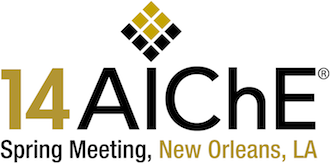

The PHA-MOC Interaction – Getting the Best Out of Both Processes
Rainer Hoff, Ph.D., P.Eng.
President
Gateway Consulting Group, Inc.
Paul A. Gathright
Global PSM Capability Manager
Invista, S.à.r.l.
The safety community, bolstered by the PSM regulations, has emphasized the importance of proper management of change, “MOC”, to ensure safe, reliable and economic operation of chemical plants and refineries. Various authors have stressed the importance of a systematic process of conducting MOCs. Hoff has taken this further by proposing the use of a standard lifecycle model for MOC, and has demonstrated how the lifecycle model can be used as a basis for an MOC best practice. A typical lifecycle for a permanent MOC consists of 8 “states”—Initiation > Scoping > Change Design > Impact Analysis > Approvals > Implementation > PSSR > Close-out—although other state sequences are possible.
An important aspect of MOC is the consideration of the “Impact on safety and health”. These impacts are normally addressed by performing a process hazards analysis, using an appropriate methodology.
Many aspects of a PHA, are independent of whether the PHA is performed within the context of an MOC or not. However, some aspects of the PHA are highly impacted by their being situated within an MOC—the most obvious one is the timing of the PHA within the MOC lifecycle. In assisting facilities in implementing MOC systems, Hoff has observed that there is an astonishing diversity of when PHAs are performed: some sites perform PHA as early as the Initiation state, others as late as the PSSR state, and most sites perform the PHAs somewhere in-between.
This paper discusses the importance of PHA timing in the MOC context, and extracts best practice recommendations, to the extent possible. In so doing, the paper discusses subsidiary concerns including the merits of risk prescreening MOCs, streamlining the selection of PHA methodology in the MOC context and the management of follow-up items. Examples are drawn from experience at actual plants.
